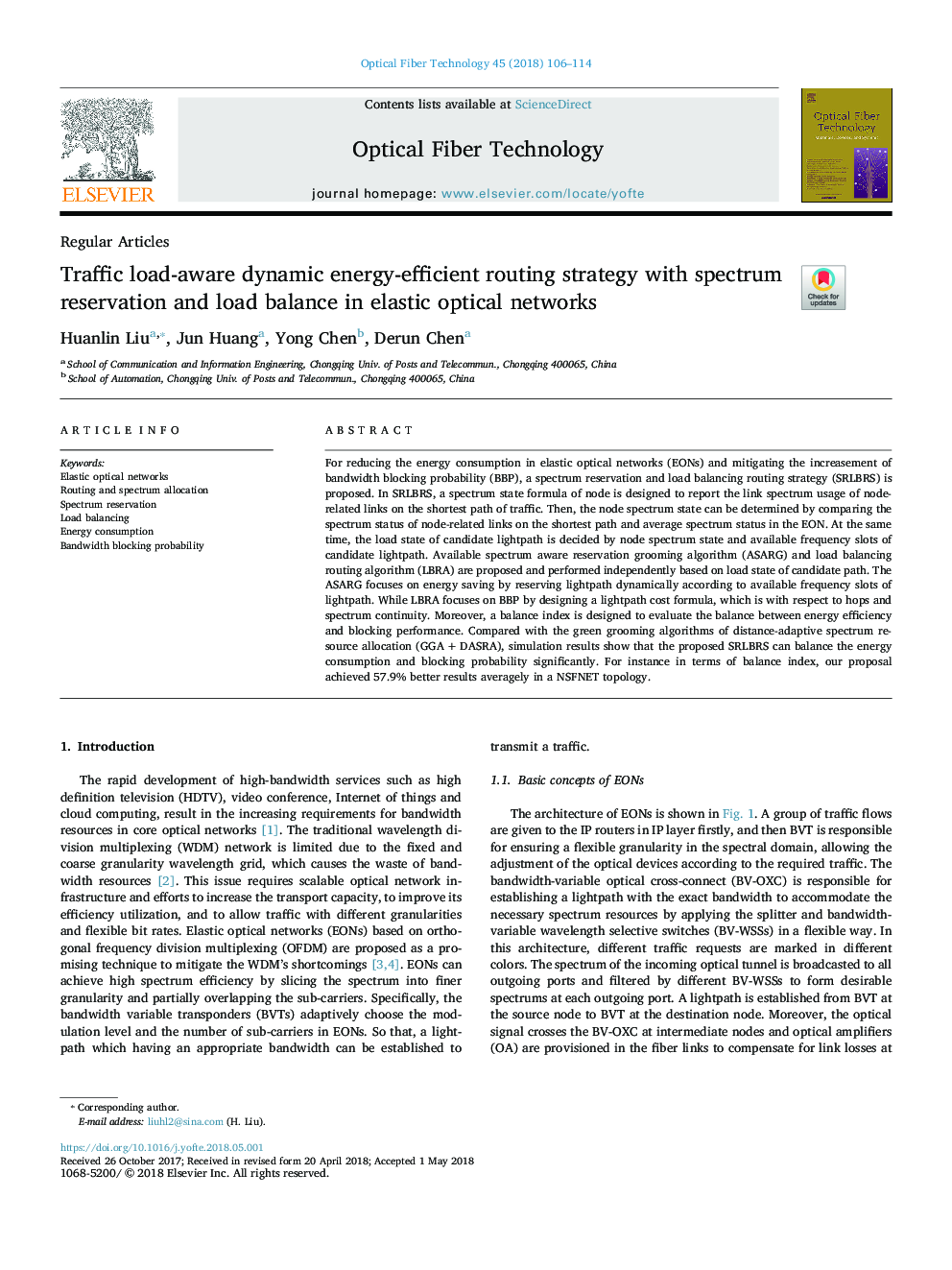| Article ID | Journal | Published Year | Pages | File Type |
|---|---|---|---|---|
| 6888210 | Optical Fiber Technology | 2018 | 9 Pages |
Abstract
For reducing the energy consumption in elastic optical networks (EONs) and mitigating the increasement of bandwidth blocking probability (BBP), a spectrum reservation and load balancing routing strategy (SRLBRS) is proposed. In SRLBRS, a spectrum state formula of node is designed to report the link spectrum usage of node-related links on the shortest path of traffic. Then, the node spectrum state can be determined by comparing the spectrum status of node-related links on the shortest path and average spectrum status in the EON. At the same time, the load state of candidate lightpath is decided by node spectrum state and available frequency slots of candidate lightpath. Available spectrum aware reservation grooming algorithm (ASARG) and load balancing routing algorithm (LBRA) are proposed and performed independently based on load state of candidate path. The ASARG focuses on energy saving by reserving lightpath dynamically according to available frequency slots of lightpath. While LBRA focuses on BBP by designing a lightpath cost formula, which is with respect to hops and spectrum continuity. Moreover, a balance index is designed to evaluate the balance between energy efficiency and blocking performance. Compared with the green grooming algorithms of distance-adaptive spectrum resource allocation (GGAâ¯+â¯DASRA), simulation results show that the proposed SRLBRS can balance the energy consumption and blocking probability significantly. For instance in terms of balance index, our proposal achieved 57.9% better results averagely in a NSFNET topology.
Keywords
Related Topics
Physical Sciences and Engineering
Computer Science
Computer Networks and Communications
Authors
Huanlin Liu, Jun Huang, Yong Chen, Derun Chen,
